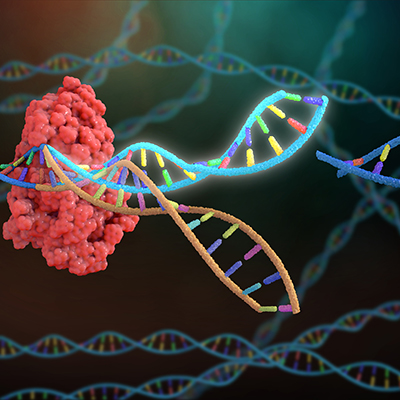March 30, 2023 -- Nanoparticles have delivered to the lungs of mice messenger RNA (mRNA) encoding the machinery needed for CRISPR/Cas9 gene editing, raising hopes that the technology could ultimately be used to treat cystic fibrosis and other diseases.
To date, mRNA programs have largely relied on the lipid nanoparticles (LNPs) used to deliver COVID-19 vaccines such as Moderna's Spikevax and Pfizer's Comirnaty. Conventional LNPs accumulate in the liver after being injected, making existing mRNA technologies well suited to vaccination and treating diseases of the liver but a poor fit for treating conditions that affect other organs.
Multiple companies and research groups are working to improve the delivery of mRNA. In 2019, the lab of Daniel Anderson, a professor in MIT's Department of Chemical Engineering, found that nanoparticles could deliver mRNA encoding a bioluminescent protein to lung cells. The researchers used polymers, instead of lipids, to create nanoparticles to make them easier to aerosolize for inhalation into the lungs. The work identified a need to increase potency and improve other attributes.
Anderson and his collaborators have now published a new study in Nature Biotechnology that describes the development of LNPs for delivery to the lungs. The LNPs have two parts. The first part, a positively charged headgroup, helps the particles interact with negatively charged mRNA and enables the nucleic acid to escape from cellular structures after entering cells. The other part, a lipid tail, helps the particles pass through the cell membrane.
Screening different headgroups and lipid tails in mice enabled the researchers to determine the design that is best suited to delivery to the lungs. To assess delivery efficiency, the collaborators used the LNPs to deliver mRNA encoding CRISPR/Cas9 components into mice with a stop signal encoded into their lungs. The CRISPR/Cas9 components cut the stop signal and thereby turned on a gene for a fluorescent protein. That allowed the researchers to use fluorescence to measure levels of mRNA expression.
The proportion of transfected lung epithelial cells rose from 40% after one dose to 50% after two doses and 60% after three doses. Transfection of club cells and ciliated cells, which are important for treating lung disease, was 15%.
"This is the first demonstration of highly efficient delivery of RNA to the lungs in mice. We are hopeful that it can be used to treat or repair a range of genetic diseases, including cystic fibrosis," Anderson said in a statement.
The collaborators plan to test the ability of the LNPs to deliver mRNA that corrects a genetic mutation in cystic fibrosis in mice and see opportunities to apply the technology to diseases such as idiopathic pulmonary fibrosis.
Copyright © 2023 scienceboard.net










